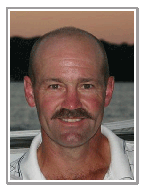In the first article in this series on the Agile Parent’s Manifesto I laid out a framework of values and principles paralleling that of the Manifesto for Agile Software Development. I spoke about valuing Goals and Purpose over rules and processes. This month we’ll take one step farther away from the traditional straight and narrow and explore a behavior that can keep us awake enough to recognize when we are operating with purpose toward our goals. But first, a little on perspective.
Project management, like parenting, requires no specific industry knowledge. People from every walk of life do both. You can learn project management theory in a classroom, but most of these classes are like Lamaze for new parents: You can talk about deep breathing and relaxing, but the real learning is in the doing. So, how can we stay in a state where we can optimize the learning while doing?
When you look at parenting from the outside it appears so simple and easy, but everyone else seems to do it in a chaotic, unorganized or dysfunctional fashion. I have an older brother and a younger sister, and we had our families in reverse chronological order; my younger sister had her children before I was married, and I had two young daughters before my older brother was married. I remember watching my sister with her son and thinking, “Why doesn’t she just …?” It seemed so obvious to me, so simple. And then several years later I got to be on the receiving end of that evaluation as my brother had similar thoughts about my parenting.
As a project manager and a parent I am in awe of just how simple my job is, and just how difficult it is to do well. You would think a role requiring no prerequisites, that just about everyone is doing to some degree, would be easy-filled with routines or processes. Just follow the bouncing ball to success. Unfortunately, that is not the case for project managers or parents. Thus, the first value of the Agile Parents Manifesto is Goals and Purpose over rules and processes.
I don’t want to imply that process and rules have no place in projects or parenting. They do, it’s just a matter of emphasis. I received a clever e-mail from one reader who believes the two are not so far apart. He suggests that the purpose of a defined process is to take common sense and make it common knowledge, and to take common knowledge and to make it common practice. I agree with him. Most worthwhile processes are just that-common sense with a form.
Bad processes suppress the human spirit because they restrict or deny the potential of those required to follow them, limiting their potential. This brings me to the second value:
As Agile Parents, we have come to value the:
Release of Human Potential
over
conformity to preconceived outcomes
This is a key tenet for Agile Project Managers and Agile Parents because it speaks to the unlimited possibilities of team members and of our children. All parents want the best for their children. But too often we are so intent on putting in what we want them to be or what we feel is missing that we don’t take the time to nurture what they naturally possess. It sounds so simple, and few of us would openly admit that we do otherwise. But, with a little reflection, we would all acknowledge it is common sense not in common practice.
So, how do you stay in a state of openness to the possibilities? How do you cultivate the potential each unique individual has to offer-your children and your team members? As Agile Parents we follow these principles:
Encouragement of curious exploration and reflective experience maintains consciousness at a level that can leverage possibilities.
Approaching situations with a sense of adventure and hope creates positive energy that builds self-esteem and respectful self-confidence.
When my daughters were very young we used to sit on the back deck and close our eyes and just listen. I would ask them to name what they heard. After they responded with the obvious external stimuli, I would ask them to listen more deeply, beyond what they knew was there. And then one more time, even more intently. Eventually, they would start to hear the “noises” within. Their breathing, heartbeat or maybe even their thoughts. Curiosity requires intent.
Cultivating curiosity is fun. In a world with so much diversity, curiosity is an asset we can’t afford to be without. To me, curiosity is just a regular propensity to challenge the assumptions that both rule and protect us. It is the tool we use to approach that which is different from what we assume/know and turn it into a learning opportunity.
Daily I meet people and handle situations. I make assumptions; some are right, some are wrong, all are immediate and driven by my personal filters (experience, fears, history, heritage). I don’t want to eliminate these assumptions; I strive to accept them with a healthy dose of challenge, or I’ll miss the chance to learn.
I don’t want my children to be without their assumptions any more than I want them to stop learning. Project teams go to great lengths to create meaningful assumptions out of lessons learned through project reviews. These help teams improve and avoid mistakes in the future. Learning is inherently about building and expanding assumptions. In school, we called it knowledge. If assumptions are in the present, innovation comes from challenging those assumptions. To cultivate innovation we need to make room for adventurous curiosity wherever we can. We start by encouraging it in our children.
Curiosity alone is a wonderful and enlightening habit. It is open, inviting and fresh. When you add hope to this equation, the sky becomes the limit. The world becomes a sea of possibilities bordered only by the energy you will commit and what you are willing to make of it. Seeing the world this way develops self-esteem because ownership for the present and the future is squarely in your hands, or at least within reach. And when this ownership becomes personalized, a new sense of respect for yourself creates the self-confidence that in turn fuels the original curiosity even more. And the circle continues almost endlessly.
Allowing time for curiosity, adventure, and challenging of assumptions is not without its caveats. There is a time and place for it. Teams, just like children, need boundaries around them. I would not let my daughter’s curiosity about matches burn down the house just for the learning. Similarly, continuously introducing too much curiosity throughout a project can create uncertainty and have an unsettling effect on the team (not to mention your baseline requirements!). Like the other values of the Agile Parenting Manifesto, understanding and applying curiosity with balance is critical.
This spring my youngest daughter, Erika, will finish her senior year at high school. I am curious to see what she will pursue in college. Perhaps, like her father, she will change majors six times before finally getting a degree in Forestry. That was a lot of money to spend to be able to name every tree on a golf course-in Latin. My curiosity may have detoured my college studies, but in my career it has taken me places and offered experiences I couldn’t have imagined. So, I know that whatever she pursues, if she maintains a healthy sense of curiosity, there will be no limit for her.
As parents and Project Managers, I challenge you to openly invite curiosity in your children and your teams. I’ll be curious to hear how it works for you.

